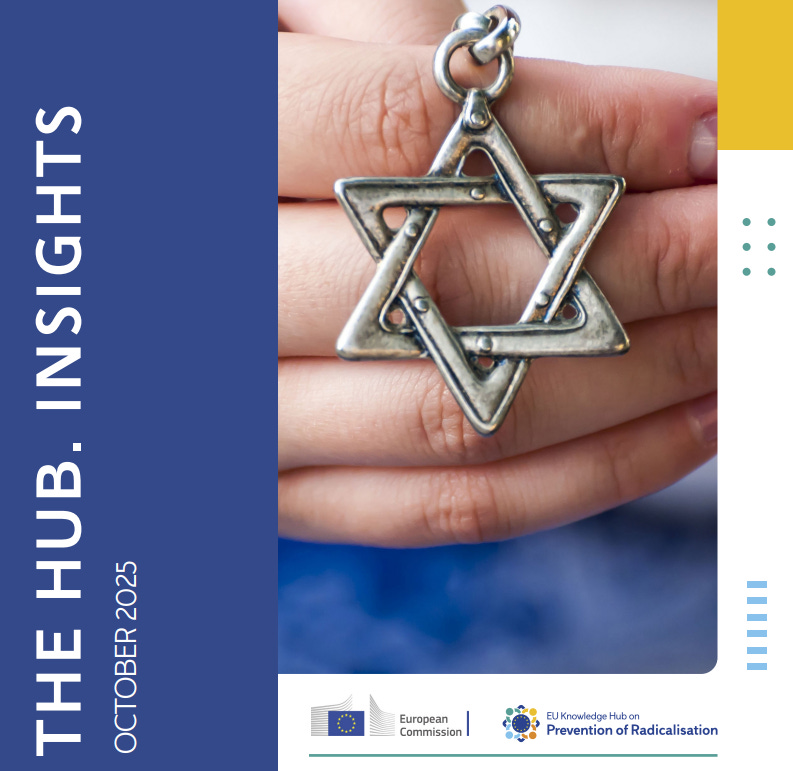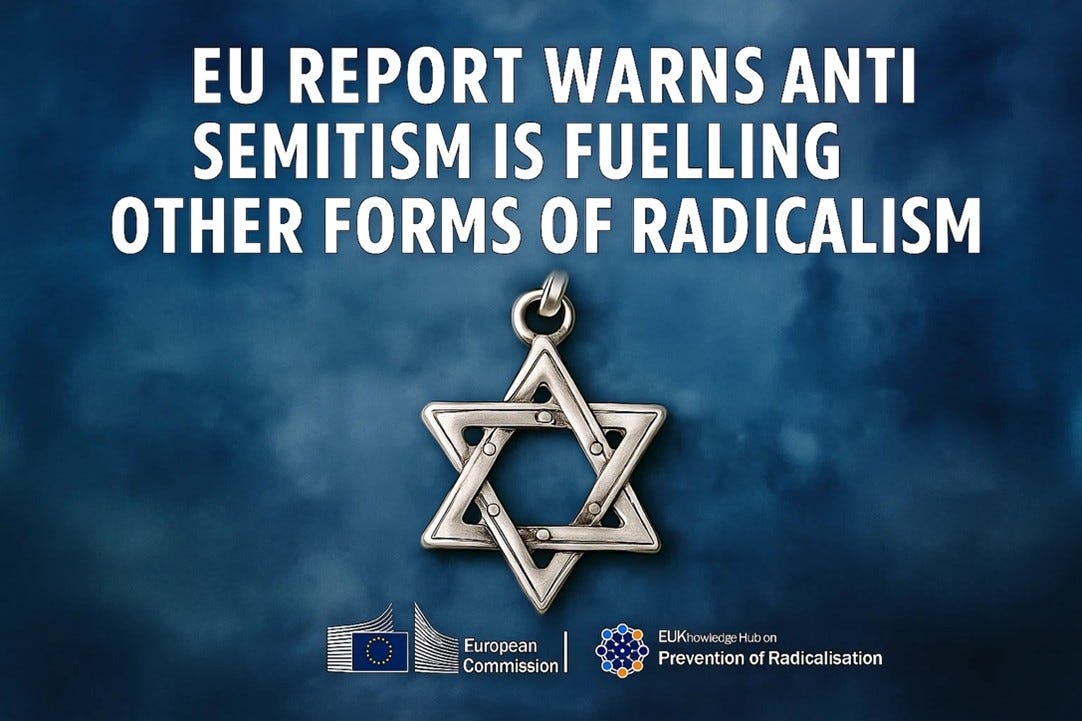EU Report Warns Antisemitism Is Fueling Other Forms of Radicalism
The new EU Knowledge Hub report reveals that antisemitism is now a central force steering people towards various other radical ideologies
The EU Knowledge Hub on the Prevention of Radicalisation has released a concerning new report demonstrating how antisemitism serves as a cross-ideological driver of radicalisation, bridging Islamist, far-right, and far-left movements through shared conspiracy theories about Jewish control, globalism, and identity.
The EU Knowledge Hub — an initiative supported by the European Commission that serves as a network for sharing research, policy practices, and prevention strategies among Member States — warns that these narratives have become a “unifying language for violent extremisms,” spreading both online and offline and corroding social cohesion across the continent.
The report’s findings are grounded in recent events that underscore the urgency of the threat. Following the October 7, 2023 Hamas assault on Israel, Europe witnessed a series of alarming incidents including attacks on synagogues, Jewish students, and Israeli athletes. In France alone, authorities recorded over 1,570 antisemitic acts in 2024, accounting for more than 60 percent of all religion-related offenses. In this charged environment, the report argues, antisemitism has moved beyond rhetoric, becoming a mobilising ideology for extremists seeking to justify violence.

Key Domains of Concern
The report outlines four main arenas where antisemitism now acts as an accelerant of radicalisation, mirroring societal divides and amplifying extremist recruitment.
1. Prisons and Closed Institutions
Antisemitic attitudes inside prisons increasingly reflect broader political tensions. After the Hamas attack, French intelligence recorded 72 antisemitism-related incidents in detention within two weeks, most involving inmates with no prior radical profile. Cases ranged from verbal abuse to violent assaults and graffiti praising terrorism. French authorities are piloting intercultural mediation programmes such as Jewish Identities, aimed at dismantling antisemitic myths and fostering empathy among radicalised inmates. Similar concerns have arisen in Germany and the UK, where prison chaplains and staff report spikes in hate speech linked to online propaganda seeping behind bars.
2. Sport, Culture, and Public Spaces
The Knowledge Hub warns that stadiums and cultural venues have become breeding grounds for hate. During the 2024 UEFA Europa League match between Maccabi Tel Aviv F.C. and Ajax Amsterdam, Israeli fans were attacked after Telegram groups circulated calls for a “Jew hunt.” Leaked messages from a private chat group in Amsterdam later revealed extremists planning a second night of violence against Israeli fans — referring to it as “Part 2 of the Jew Hunt.”
At the Paris Olympics, Jewish athletes faced harassment both onsite and on social media. Even cultural institutions, such as the Anne Frank House in Amsterdam, have been defaced with antisemitic graffiti. The EU-UEFA cooperation agreement under the EU Strategy on Combating Antisemitism is cited as a starting point, but the report urges stronger enforcement and accountability to prevent extremists from exploiting public gatherings as recruitment hubs.
3. Digital Ecosystems and Online Hate
The digital sphere remains the primary vector for antisemitic radicalisation. Researchers at the Institute for Strategic Dialogue identified more than 50 pro-Nazi TikTok accounts with a combined six million views, still active despite multiple reports. Conspiracies about “global Jewish control” and “Zionist manipulation” circulate freely on X and Telegram, often merged with anti-Muslim or anti-state propaganda. Following the October 7th attack, antisemitic memes, AI-generated videos, and Holocaust denial posts surged across European platforms. The report calls for robust enforcement of the Digital Services Act to compel tech companies to remove illegal content and reveal how algorithms amplify hate.
4. Intersecting Forms of Extremism
The Knowledge Hub highlights how antisemitism now intersects with misogyny, conspiracy thinking, and anti-state extremism. Online “incel” and “red-pill” communities frequently invoke antisemitic tropes, blaming “Jewish elites” for feminism or social decay. This ideological fusion has appeared in manifestos from the Oslo (2011), Christchurch (2019), and Halle (2019) attackers, each combining antifeminist and antisemitic rhetoric. Such overlaps, the authors argue, blur boundaries between far-right, Islamist, and far-left movements, making antisemitism “a universal hate language in Europe’s extremist spectrum.”

A Whole-of-Society Response
Given the breadth and complexity of these interconnected threats, the Knowledge Hub argues that fragmented responses are insufficient. The report’s contributors urge policymakers to treat antisemitism not merely as discrimination but as a security threat and radicalisation driver. They advocate integrated education policies, cross-border intelligence sharing, and digital-literacy campaigns targeting youth vulnerable to extremist narratives.
In addition, cultural and artistic initiatives, such as interfaith exhibits, theatre collaborations, and peace-music projects, are highlighted as tools to reclaim public spaces from hate. The arts, the report notes, can become “a bridge from research to resilience,” offering counter-narratives where ideology once thrived.
Yet despite these promising interventions, the urgency remains clear. Without recognising antisemitism as a structural component of radicalisation, the report explains, Europe risks allowing extremists to exploit old prejudices in new arenas. As one author concludes, “Antisemitism is no longer a relic of the past, it is the connective tissue of today’s hate.”




The EU is part of the problem, and I know at age 64 that relying on censorship to eliminate lies is a suicidal strategy. The EU is a sponsor of antisemitism, but they are going to use antisemitism as an excuse for stopping opponents from ridding Europe of the Mohammedan murder cult.